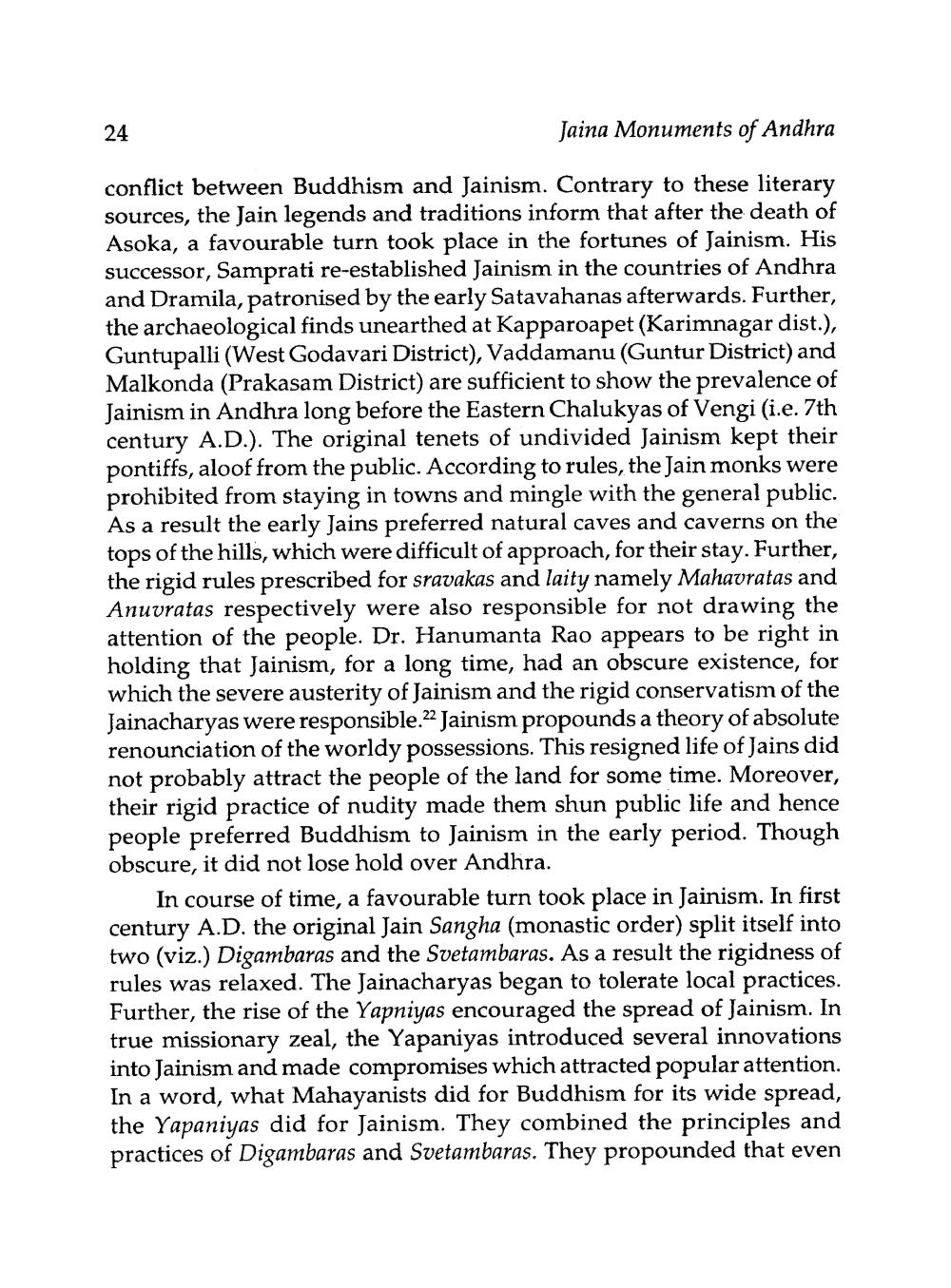________________
Jaina Monuments of Andhra
conflict between Buddhism and Jainism. Contrary to these literary sources, the Jain legends and traditions inform that after the death of Asoka, a favourable turn took place in the fortunes of Jainism. His successor, Samprati re-established Jainism in the countries of Andhra and Dramila, patronised by the early Satavahanas afterwards. Further, the archaeological finds unearthed at Kapparoapet (Karimnagar dist.), Guntupalli (West Godavari District), Vaddamanu (Guntur District) and Malkonda (Prakasam District) are sufficient to show the prevalence of Jainism in Andhra long before the Eastern Chalukyas of Vengi (i.e. 7th century A.D.). The original tenets of undivided Jainism kept their pontiffs, aloof from the public. According to rules, the Jain monks were prohibited from staying in towns and mingle with the general public. As a result the early Jains preferred natural caves and caverns on the tops of the hills, which were difficult of approach, for their stay. Further, the rigid rules prescribed for sravakas and laity namely Mahavratas and Anuvratas respectively were also responsible for not drawing the attention of the people. Dr. Hanumanta Rao appears to be right in holding that Jainism, for a long time, had an obscure existence, for which the severe austerity of Jainism and the rigid conservatism of the Jainacharyas were responsible.22 Jainism propounds a theory of absolute renounciation of the worldy possessions. This resigned life of Jains did not probably attract the people of the land for some time. Moreover, their rigid practice of nudity made them shun public life and hence people preferred Buddhism to Jainism in the early period. Though obscure, it did not lose hold over Andhra.
24
In course of time, a favourable turn took place in Jainism. In first century A.D. the original Jain Sangha (monastic order) split itself into two (viz.) Digambaras and the Svetambaras. As a result the rigidness of rules was relaxed. The Jainacharyas began to tolerate local practices. Further, the rise of the Yapniyas encouraged the spread of Jainism. In true missionary zeal, the Yapaniyas introduced several innovations into Jainism and made compromises which attracted popular attention. In a word, what Mahayanists did for Buddhism for its wide spread, the Yapaniyas did for Jainism. They combined the principles and practices of Digambaras and Svetambaras. They propounded that even




